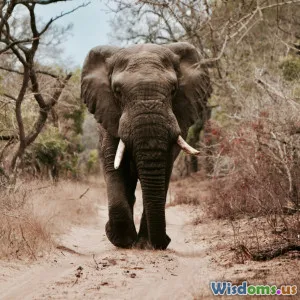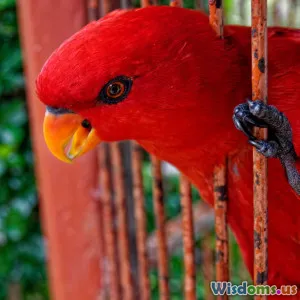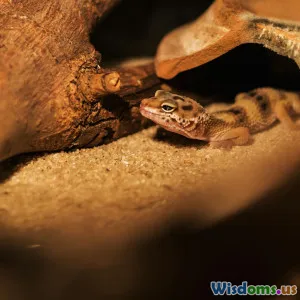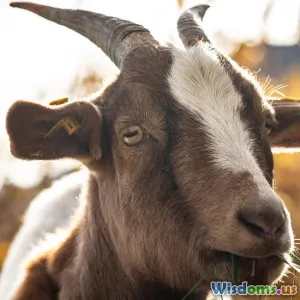
What Happens When Predators Disappear from Their Ecosystems
11 min read Explore how losing top predators disrupts ecosystems, triggers trophic cascades, and impacts biodiversity and human wellbeing, with vivid real-world examples and ecological facts. (0 Reviews)
What Happens When Predators Disappear from Their Ecosystems?
Introduction
Imagine wandering through a forest where once the roar of a lion was enough to still the brush—or through seas from which the shadow of a shark no longer sends fish scattering. Few changes in the natural world are as profound, far-reaching, and, at times, unexpected as what happens when predators disappear from their ecosystems. Scientists call apex predators the architects of biodiversity—once they're gone, entire ecosystems can shift, unravel, or even collapse.
But why does the absence of a predator ripple out so spectacularly? How does one missing face in the food web wreak havoc on landscapes, waterways, forests, farms, and ultimately even us? Distilling decades of research, let’s explore how predators are linchpins holding nature’s intricate machinery together—with powerful examples, hard data, and inspiring stories.
The Role of Predators: More Than Just Hunters
Defining ‘Predator’
A predator is any organism that hunts and consumes others—the prey. Apex predators (like wolves or great white sharks) sit on top of the food web, rarely hunted themselves. Others, like foxes or owls, may be mid-level ‘mesopredators,’ crucial in their own right.
Keystone Species: The Foundation of Ecosystems
Predators are often “keystone species.” Their survival disproportionately shapes their environment. Much like removing a keystone can collapse an arch, losing these animals can degrade an entire ecosystem’s balance.
“The influence of top predators extends peephole-like far beyond direct prey—rippling across entire biological communities,” says Dr. James Estes, ecologist and author of Serendipity: An Ecologist's Quest to Understand Nature.
Trophic Cascades: The Domino Effect
What Is a Trophic Cascade?
A trophic cascade is a series of direct and indirect ecological effects that ripple through the food web when a keystone predator is lost. These changes are dramatic, often resulting in the overpopulation of one species and the decline of many others.
Yellowstone Wolves: An Ecological Classic
One of the most powerful examples comes from Yellowstone National Park. When wolves were eradicated in the 1920s, elk populations exploded. Free from predation, elk overgrazed willow and aspen shoots, decimating young growth and ultimately transforming riverbanks—altering everything from beaver populations to songbird diversity.
Only after wolves were reintroduced in the 1990s did the ecosystem begin to rebalance. Plants regrew, beaver numbers surged, and the rivers even changed course as stabilizing vegetation reappeared.
Sea Otters and the Kelp Forest
The loss of sea otters along the Pacific coast led to a boom in sea urchin populations. Unchecked, urchins mowed down vast kelp forests—marine jungles that anchor thousands of species. This cascade threatened marine biodiversity, fisheries, and shoreline stability. The return of otters brought the kelp forests—and abundant marine life—back from near-collapse.
Prey Population Explosions—and Ecological Collapse
Mesopredator Release: The Domino Accelerates
When apex predators vanish, mid-level predators (mesopredators) like raccoons or coyotes can proliferate. This “mesopredator release” can cause chaos. For example, after wolves and cougars disappeared from parts of North America, rising coyote populations decimated smaller mammals and ground-nesting birds.
The White-tailed Deer Dilemma
Eastern United States forests tell a story of predator loss. With the extirpation of wolves and mountain lions, white-tailed deer not only surged in number but transformed whole forest landscapes through over-browsing. Young trees, shrubs, and wildflowers all waned, and with them the birds and insects that depend on such vegetation.
Fact: In several US states, deer populations have reached 30-40 per square mile, over four to ten times higher than historical estimates, primarily due to the absence of large predators.
African Savannas: Lions and Leopards
In Africa, research shows that declining lion and leopard populations have allowed olive baboons to explode. These baboons raid village crops and even disrupt community life, creating unexpected human-wildlife conflict—a sharp reminder that the ecological balance stretches even into our own lives.
Ecosystem Imbalance, Biodiversity Loss, and Extinctions
Unraveling the Food Web
Without top predators, the food web unravels. The unchecked prey may drastically alter plant communities, changing habitat availability for countless other species. Some species lose their food sources or shelter and spiral toward local extinction.
Impacts on Biodiversity
Biodiversity, the measure of variety within an ecosystem, frequently drops after predator loss. One classic study from New Zealand found that when native bird predators (like the extinct Huia) disappeared, certain beetles became overabundant and caused damage to native vegetation, reshaping entire forest dynamics.
Real-World Consequence: The Decline of Vultures in India
While not traditional predators, vultures fulfill the role of ‘apex scavengers.’ In the late 20th and early 21st centuries, vulture populations in India plummeted by over 95% due to veterinary drugs poisoning their food sources. The aftermath: rotting animal corpses led to increases in disease-carrying rats and feral dog populations, which in turn escalated rabies cases among humans.
Far-Reaching Effects: Human Health and Livelihoods
Disease Dynamics
Overabundance of prey or mesopredators often brings outbreaks of disease. In the Northeastern United States, shrinking predator numbers meant more deer and rodents—leading to surges in ticks and Lyme disease, which rose nearly tenfold between 1991 and 2018.
Economic Ramifications
Predator loss can threaten agriculture and local economies. For example, crop raids by baboons in Africa or deer damaging crops and forests in North America cause millions of dollars in losses. The explosion of crown-of-thorns starfish on Australia’s Great Barrier Reef—due in part to lost predators—has led to coral decline, threatening tourism and fisheries dependent on healthy reefs.
Water and Soil Quality
It may seem surprising, but vegetative loss from prey overgrazing can destabilize soils and pollute waterways. In Yellowstone, the absence of wolves didn’t just damage vegetation—it reduced beaver dams and wetland habitats, lessening water filtration and storage. This led to muddier rivers and degraded aquatic habitats.
Ecosystem Resilience, Recovery, and Rewilding
Success Stories: Bringing Predators Back
The ‘rewilding’ movement aims to restore ecosystems by reintroducing apex predators. Yellowstone’s wolf reintroduction is the global archetype, but other efforts echo its success:
- Europe’s Lynx and Wolves: Rewilding initiatives from the Iberian Peninsula to the Carpathians are boosting forests and curbing overgrazing.
- Sea Otter Reintroduction: Kelp forests rebounded whenever otter populations were restored.
- Mekong River: Dwindling giant catfish populations led to declines in riverine health; strict catch bans now seek reversal.
Recovering Ecosystem Functions
Restored predators often lead to:
- Healthier, more diverse landscapes
- Improved water quality
- Reduced human-wildlife conflict
- Greater resilience to environmental change
Rewilding, however, faces challenges—sometimes social or political, as communities adapt to living with large predators again.
Why Predators Matter: The Moral and Practical Case
Ethical Responsibility
Many argue that, beyond ecology, there’s an ethical duty to protect predators. Indigenous cultures worldwide revere wolves, tigers, or sharks as caretakers—not mere threats. These animals embody the spirit and health of wild lands.
Practical Value
Nature’s balance is our balance. Healthy ecosystems regulated by predators provide services worth trillions of dollars—like crop pollination, climate regulation, pest control, and clean water. Losing predators often means paying for solutions that were once elegantly free.
Conclusion: An Urgent Wake-up Call
The consequences of removing predators from their ecosystems reverberate through every layer of the biosphere—altering landscapes, threatening species, destabilizing economies, and even endangering human health. These ecological engineers wield profound influence; their absence swiftly teaches us the cost of imbalance.
Rewilding, habitat protection, and policy shifts are vital. Recognizing the true value of predators is not simply an academic exercise—it is essential for the health of the planet and ourselves. Ensuring the survival of lions, wolves, or sharks is not just about conserving a charismatic species; it’s about preserving our world’s biodiversity, resilience, and future prosperity.
Next time you hear the howl of a wolf or the crash of the surf above a hunting shark, remember: healthy ecosystems depend on these guardians. Protecting them ensures a vibrant planet for generations yet unborn.
Rate the Post
User Reviews
Popular Posts




















